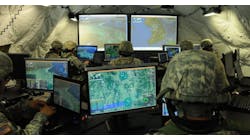GE Aerospace reported that it has conducted more than 3 million hours of supercomputing simulations during the past three years in its effort to define new commercial jet engine technology. It is among the largest users of U.S. Dept. of Energy exascale supercomputers, including the Frontier supercomputer at Oak Ridge National Laboratory in Tennessee, and the Aurora supercomputer at Argonne National Laboratory in Illinois.
The supercomputers are capable of processing “billions upon billions of calculations per second,” as GE described it, meaning its engineers can conduct simulations that otherwise would not have been possible, and contributing to faster technological development and better designs.
Among the technologies GE has modeled is the integration of Open Fan engine architecture with an aircraft, a project that also involves Boeing and NASA.
“Developing next-generation aviation technologies for a safer, more energy efficient industry requires game-changing engineering capabilities,” stated Arjan Hegeman, vice president of commercial future of flight engineering at GE Aerospace.
The "open fan” (or "open rotor”) engine concept involves a large, counter-rotating fan operating without a surrounding duct or nacelle, which allows a higher bypass ratio and theoretically improved fuel efficiency compared to a turbofan engine design.
GE’s Open Fan engine architecture is said to be the “most promising” technology developed by the GE and Safran joint venture CFM International through its Revolutionary Innovation for Sustainable Engines (RISE) technology demonstration program. CFM RISE is developing advanced engine architectures, compact cores, and hybrid electric systems that are compatible with 100% sustainable aviation fuel.
GE engineers are studying the aerodynamics of an Open Fan mounted on an aircraft wing in simulated flight conditions. The results of the simulation allow the engine design to be optimized for fuel efficiency, noise reduction, and other objectives.






